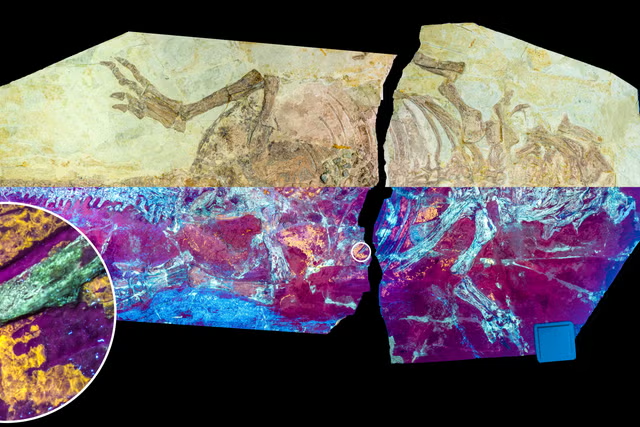Rather than dying dramatically in a massive supernova explosion, some large stars may die quietly and without fanfare.
This may explain the mysterious and sudden disappearance of certain stars from the night sky spotted by astronomers over the years, according to a new paper in the journal Physical Review Letters.
These massive stars may completely collapse in on themselves and become black holes without a supernova, which has been long thought to be a necessary part of the death of a large star.
Stars "burn" through a process called nuclear fusion, which involves combining lighter hydrogen atoms into heavier helium, releasing a tremendous amount of energy in the form of light and heat. When this hydrogen fuel begins to run out, the star enters the later stage of its life and begins to die.
Stars may die in a variety of ways depending on their mass. When stars run out of hydrogen, the star's core contracts and heats up, causing the outer layers to expand and cool, and the star becomes a red giant. Smaller stars—up to around 8 times the mass of our sun—will eventually expel these outer layers and the core will become a white dwarf. Larger stars, on the other hand, go through several stages of nuclear fusion, creating heavier and heavier elements until iron is made, at which point nuclear fusion stops, the star collapses under its own gravity, and then explodes in a huge burst of energy known as a supernova.
If the remaining stellar core is between about 1.4 and 3 solar masses, it will collapse into a neutron star, an incredibly dense object composed mostly of neutrons, while if the core is more than about 3 solar masses, it will collapse into a black hole, a point in space with gravity so strong that not even light can escape. from it.
However, this new research has found strong evidence that enormous stars may die and form a black hole without any supernova at all, in a process known as "complete collapse."
"We believe that the core of a star can collapse under its own weight, as happens to massive stars in the final phase of their lives. But instead of the contraction culminating into a bright supernova explosion that would outshine its own galaxy, expected for stars more than eight times as massive as the Sun, the collapse continues until the star becomes a black hole," study co-author Alejandro Vigna-Gómez, a researcher at the Max Planck Institute for Astrophysics, who was a postdoc at the University of Copenhagen's Niels Bohr Institute during the study, said in a statement.
According to the researchers, this finding could also explain the phenomenon of stars silently disappearing from the sky without the explosive burst of a supernova.
"Were one to stand gazing up at a visible star going through a total collapse, it might, just at the right time, be like watching a star suddenly extinguish and disappear from the heavens. The collapse is so complete that no explosion occurs, nothing escapes and one wouldn't see any bright supernova in the night sky. Astronomers have actually observed the sudden disappearance of brightly shining stars in recent times. We cannot be sure of a connection, but the results we have obtained from analyzing VFTS 243 has brought us much closer to a credible explanation," Vigna-Gómez said.
This discovery was prompted by the observation of a binary star system called VFTS 243 in a small neighboring galaxy known as the Large Magellanic Cloud, which is comprised of a large star and a black hole with a mass around 10 times that of our sun.
This system should have traces of the black hole star having gone supernova in the past, but astronomers could find no such evidence.
"Normally, supernova events in star systems can be measured in various ways after they occur. But despite the fact that VFTS 243 contains a star that has collapsed into a black hole, the traces of an explosion are nowhere to be found. VFTS 243 is an extraordinary system. The orbit of the system has barely changed since the collapse of the star into a black hole," said Vigna-Gómez.
Astronomers would have expected to see signs of a "natal kick," which is when a neutron star or black hole formed in a supernova is accelerated to between 100-1000 km per second by the immense forces of the supernova explosion. The black hole in the VFTS 243 system only seems to have been accelerated to about 4 km/s, however. Additionally, the supernova forces usually affect the symmetry of the orbit of a binary star system, but no such effects were seen in the VFTS 243 system.
"The orbit of VFTS is almost circular and our analysis indicates there are no signs of large asymmetries during collapse. This again indicates the absence of an explosion," Vigna Gomez said.
Therefore, the black hole in the VFTS 243 system appears to have been born without a supernova.
"Our analysis unequivocally points to the fact that the black hole in VFTS 243 was most likely formed immediately, with the energy mainly being lost via neutrinos," co-author Irene Tamborra, also a researcher at the Niels Bohr Institute, said in a statement
This discovery is hoped to open new doors to studying how stars die and how black holes are born.
"Our results highlight VFTS 243 as the best observable case so far for the theory of stellar black holes formed through total collapse, where the supernova explosion fails and which our models have shown to be possible. It is an important reality check for these models. And we certainly expect that the system will serve as a crucial benchmark for future research into stellar evolution and collapse," Tamborra said.
Do you have a tip on a science story that Newsweek should be covering? Do you have a question about supernovas? Let us know via science@newsweek.com.
Disclaimer: The copyright of this article belongs to the original author. Reposting this article is solely for the purpose of information dissemination and does not constitute any investment advice. If there is any infringement, please contact us immediately. We will make corrections or deletions as necessary. Thank you.



